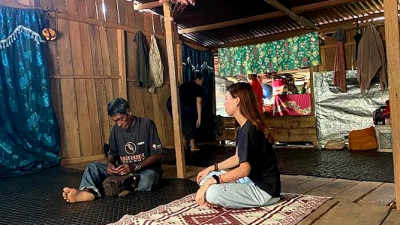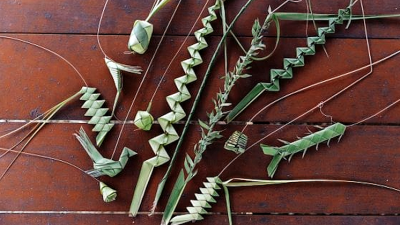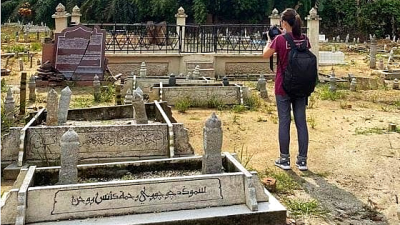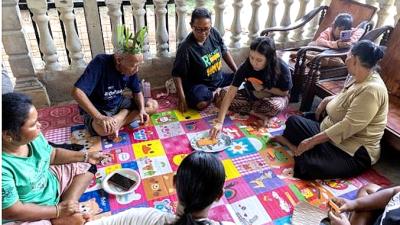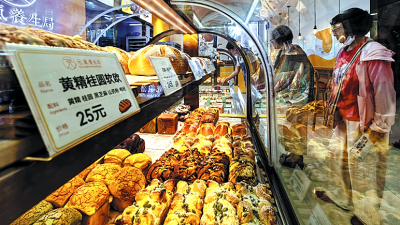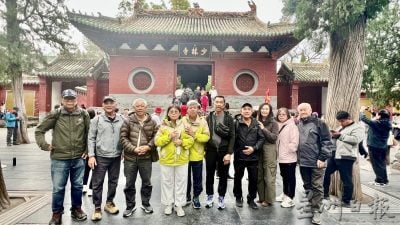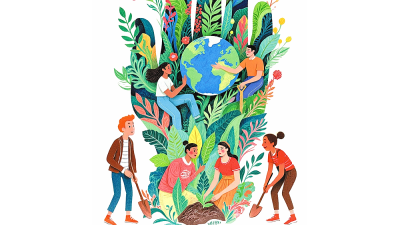
As I grow older, the Lunar New Year is becoming increasingly dull to me – elders passing away, traditions fading, festive dishes losing their original tastes, and relatives becoming distant.
But ever since I discovered that many indigenous people also celebrate this festival, I have been looking forward to it every year.
These friends who live in the mountains and forests often have complex historical ties to the Chinese community through intermarriages.
Although the Chinese ancestry of most of their descendants has long been diluted, many villages continue to celebrate Lunar New Year out of concern that their Chinese ancestors might go “hungry”, “have no money to spend”, or “lack clothes to wear”.
This Year of the Snake, while relatives and friends got stuck in sluggish traffic on the North-South Expressway, I ventured alone into the Urang Huluk settlement in Johor.
In one household, the family’s “Chinese ancestor” was an abandoned baby girl left behind by Malayan Communist Party members during the Emergency.
She was adopted by an indigenous couple and was named Kinah.
Although the exact origin of her name remains unknown, it is likely derived from the Hokkien word for “child”.
It is said that Kinah’s biological family never acknowledged her, and to this day they might not even know that their descendants are quietly celebrating Lunar New Year deep in the forest.
As a city kid who never helped grandma prepare Lunar New Year dishes, I always find myself overwhelmed when celebrating the festival in indigenous villages.
Their New Year isn’t just about having a reunion dinner with family – it involves preparing a feast for the entire village.
My fieldwork often turns into peeling onions all day, slicing through an entire crate of ginger, or even stirring food in a massive pot using what looks like a paddleboard.
Interestingly, many villagers without Chinese ancestry still dress in bright red Chinese-style suits and cheongsams to celebrate, enjoying the feast meticulously prepared by this household.
Ironically, I, the so-called “authentic Chinese” walking around with my camera, seem more out of place.
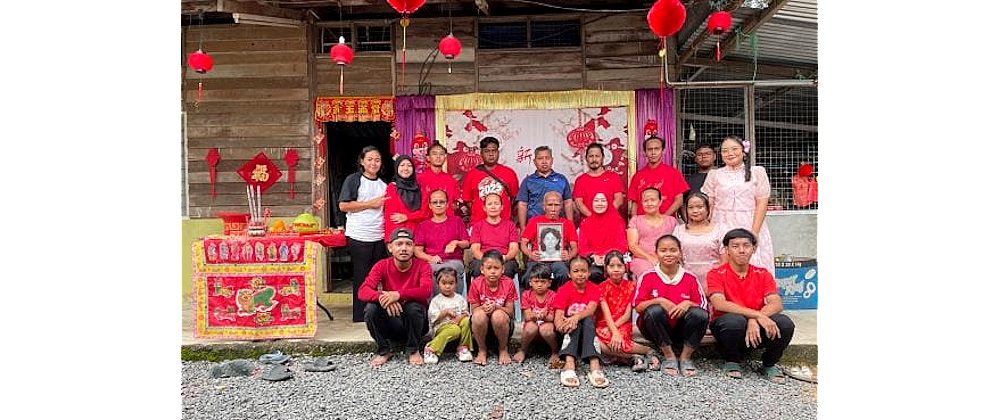
Punan taboos: The indigenous people’s rules to survive
In reality, Orang Asli societies in Peninsular Malaysia embrace a minimalist way of life. In many homes that I have visited, there is little furniture or tableware – people sleep on woven mats, squat on the floor to cook, and eat with their hands.
Despite living in an environment with scarce resources, cases of starvation are rare. This is due to a powerful social protection mechanism known as Punan taboos (also called Punen, Pehunen, Kempunan, etc.).
The word Punan translates to “disaster” or “misfortune”. For example, if three men go hunting in the forest and one of them (A) returns empty-handed while the other two (B and C) have successful hunts, they must share with A, otherwise they would violate the Punan taboos.
If A declines the offer out of embarrassment but secretly still wants to eat, he would also be considered to have broken the taboos.
Another scenario: if A is out hunting alone and comes across a stranger (D) roasting a wild boar, A must at least touch the food even if he doesn’t want to eat it, or he would also violate the Punan taboos.
What happens if someone breaks a Punan taboo? He might trip while walking, gets bitten by a snake or encounters a tiger in the forest, or even falls ill mysteriously.
To avoid such misfortunes, most indigenous people adhere to the taboos strictly, ensuring that no one is picky about food.
Whatever is cooked must be eaten. If they really don’t want to eat something, they must perform small rituals or recite mantras to nullify the Punan effect.
Each ethnic group has its own way of doing this. For the Semelai people in Pahang, a person must touch the food and say, “Lai se koh, yek jama,” which means “Spirit, I have eaten,” to inform the unseen forces not to punish them for being selective.
Meanwhile, the Urang Huluk in Johor have an even more interesting method. The elders say that if they don’t want to eat a particular food, they must touch it and loudly recite, “Tessnene, pinas pinas, ular mati, aku hidup,” which translates to “The snake will die, and I will live.” Then, they rub saliva on their mouth and behind their ears.
In contrast, the Semai in Perak don’t recite specific phrases but will still touch the food and rub it on the ground near their feet to prevent snakes from biting them.
Besides fearing snakes and tigers, many indigenous people also dread encountering crocodiles by the river.
My Semai friend once told me that in places infested with crocodiles, such as where the Slim River meets Ulu Bernam, the local residents believe if they see someone eating, they must take a bite as well. They think that sharing food helps prevent crocodile attacks.
One Urang Huluk friend even told me that his grandfather was devoured by a crocodile because he had unknowingly violated a Punan taboo.
According to his recollection, his grandfather had casually mentioned wanting to eat sweet potatoes before leaving the house. However, he forgot to take a bite before heading out. As a result, he encountered a crocodile in the river – and was never seen again.
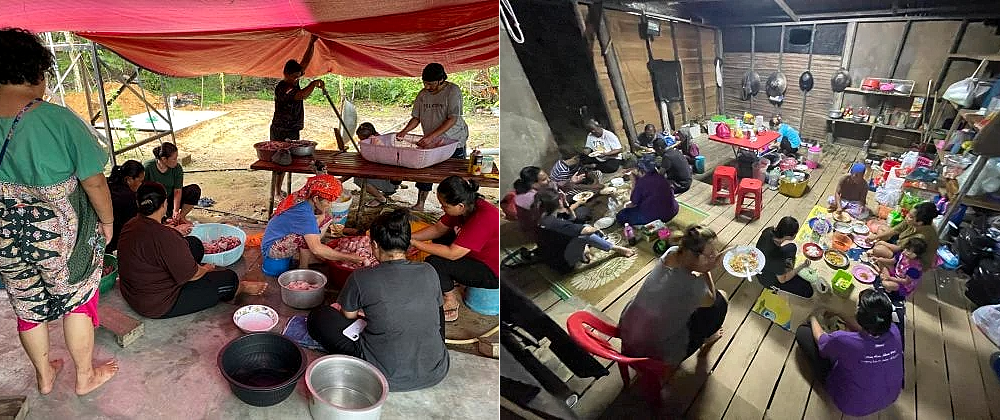
Sharing is not just about survival
In other words, the Punan taboos are not only about the spirit of sharing but also about satisfying cravings.
To avoid breaking the taboos, one must not hoard food, be picky, or casually express food cravings.
Interestingly, not all foods can be exempted from the Punan taboos through simple rituals. For example, among the Semoq Beri people in Pahang, fried rice is considered the most serious Punan taboo.
If someone in the household cooks fried rice but does not eat it, he could face misfortune for a month, three months, or even half a year.
Similarly, the Urang Huluk community believes that the ritual three-coloured sticky rice with chicken, which is offered to the Datuk Keramat spirits, cannot be exempted from the Punan curse with a simple mantra.
I suspect that many of the most severe Punan taboos revolve around rice and glutinous rice, likely due to historical food scarcity.
Since not all indigenous communities cultivate paddy, their staple foods have traditionally been tapioca and sweet potatoes – making the practice of sharing even more vital.
Thanks to this strong social protection mechanism, I never worry about going hungry when conducting fieldwork in the forest.
I follow their way of life – eating whatever is served, sitting cross-legged on the ground, and using my hands to eat – enjoying the beauty of communal dining that transcends ethnic boundaries.
I remember once mentioning that I wanted to try the traditional durian cake (lempok) made by the Urang Huluk people. To my surprise, the entire village immediately began rummaging through their fridges, searching for any leftover!
Eventually, they found a pack and gifted it to me.
Just as I was about to leave, a friend hurriedly handed me a spoon and reminded me:
“Take a bite before you go, or you’ll break the Punan taboos.”
For the indigenous people, sharing is not just a survival strategy, it is a bond between people.
Perhaps, sharing meals is the most meaningful New Year ritual of all.
More on the Echoes of the Forest
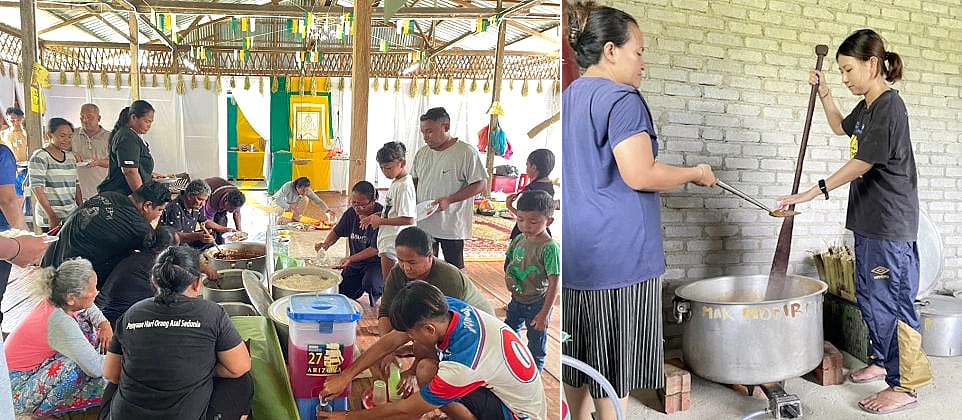
(Yi Ke Kuik is a Master’s student in Anthropology at National Taiwan University focusing on issues related to indigenous people in Peninsular Malaysia. Founder of myprojek04 photography initiative and writes for a column called Echoes from the Forest (山林珂普) in Sin Chew Daily, highlighting the photos and stories of indigenous people.)
ADVERTISEMENT
ADVERTISEMENT






